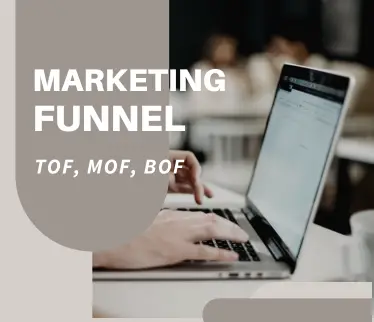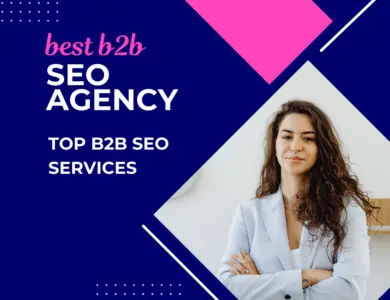Creating Effective Content for Each Stage of the Marketing Funnel: TOF, MOF, and BOF

Table of Contents
Introduction to the Marketing Funnel

In the ever-evolving landscape of digital marketing, understanding the marketing funnel is crucial for crafting content that resonates with your audience and drives conversions. The marketing funnel is a model that represents the journey potential customers take from becoming aware of your brand to making a purchase decision. This journey is typically divided into three main stages: Top of the Funnel (TOF), Middle of the Funnel (MOF), and Bottom of the Funnel (BOF). Each stage plays a unique role in guiding prospects through the decision-making process.
Top of the Funnel (TOF): Awareness Stage
At the top of the funnel, the primary goal is to attract and engage a broad audience. At this stage, potential customers are just becoming aware of their problems or needs and are beginning to seek solutions. Content tailored for TOF should focus on education and awareness, helping to inform your audience about the issues they face and how your brand can provide solutions. This might include blog posts, social media content, and informative videos that address common questions and concerns.
Middle of the Funnel (MOF): Consideration Stage
As prospects move into the middle of the funnel, they enter the consideration stage. Here, they are more engaged and actively evaluating their options. They are aware of the problem and are looking for more detailed information about potential solutions. Content for the MOF should aim to nurture these leads by providing deeper insights, such as case studies, webinars, and detailed guides. This helps to build trust and positions your brand as an expert in the field.
Bottom of the Funnel (BOF): Decision Stage
Finally, at the bottom of the funnel, the focus shifts to converting leads into customers. This stage is where prospects are ready to make a purchase decision. They need assurance that they are making the right choice, so content should emphasize product demonstrations, customer testimonials, and special offers. The goal is to reinforce the value of your offering and prompt action, whether it’s making a purchase, signing up for a service, or another form of conversion.
Importance of Tailored Content Across Funnel Stages
Creating tailored content for each stage of the marketing funnel is essential for several reasons. Firstly, it ensures that you are meeting your audience’s needs at every step of their journey. By addressing their specific concerns and questions at the right time, you build trust and credibility. Secondly, it helps in efficiently guiding prospects toward conversion by providing the right information when they need it most. Finally, tailored content enhances the overall user experience, making your marketing efforts more effective and increasing the likelihood of turning leads into loyal customers.
Understanding the nuances of each stage and crafting appropriate content is key to maximizing the effectiveness of your marketing strategy. By doing so, you not only attract potential customers but also nurture and convert them, ultimately driving growth for your business.
Understanding the Marketing Funnel: Definition and Purpose
In the world of digital marketing, the concept of the marketing funnel is crucial for understanding and optimizing the customer journey. The marketing funnel helps businesses visualize and strategize how potential customers move from being aware of a product or service to making a purchase decision. This article will delve into the definition and stages of the marketing funnel, focusing on the Top of the Funnel (TOF), Middle of the Funnel (MOF), and Bottom of the Funnel (BOF), and discuss its role in guiding customers through their journey.
What is the Marketing Funnel?
The marketing funnel is a model that illustrates the various stages a potential customer goes through before making a purchase. It is called a “funnel” because, like a physical funnel, it starts broad at the top and narrows as you move down. This narrowing reflects how the number of potential customers decreases as they progress through each stage, ultimately leading to conversions.
Stages of the Marketing Funnel
- Top of the Funnel (TOF): Awareness Stage
- The TOF is the widest part of the funnel, where the primary focus is on attracting as many people as possible. At this stage, potential customers are likely unaware of your brand or the specific problems they have that your product or service can solve. The goal here is to create awareness and generate interest. Content such as blog posts, social media updates, and informative videos are commonly used to educate and engage a broad audience.
- Middle of the Funnel (MOF): Consideration Stage
- As potential customers move to the MOF, they are more aware of their problems and are actively seeking solutions. This stage is about nurturing these leads by providing more detailed and specific information about your offerings. Content like case studies, white papers, webinars, and product guides can help educate and build trust with your audience. The objective at this stage is to position your brand as a credible solution provider and keep potential customers engaged.
- Bottom of the Funnel (BOF): Decision Stage
- The BOF is the narrowest part of the funnel, where potential customers are ready to make a purchase decision. They are comparing options and seeking final assurances. Content at this stage should aim to convince and convert leads into customers. Testimonials, product demos, free trials, and special offers can be effective in tipping the scales in your favor. The BOF is all about providing the final nudge needed for conversion, focusing on the value and benefits of your offerings.
The Purpose of the Marketing Funnel
The marketing funnel serves several important purposes in a business’s marketing strategy:
- Guiding the Buyer’s Journey: The funnel helps map out the customer journey from awareness to decision, enabling businesses to tailor their content and engagement strategies at each stage.
- Targeted Communication: By understanding where a potential customer is in the funnel, businesses can provide more relevant and personalized content, increasing the likelihood of conversion.
- Optimizing Marketing Efforts: The funnel framework allows businesses to analyze where potential customers drop off and optimize their strategies to improve engagement and conversion rates.
- Resource Allocation: It helps in allocating resources efficiently, focusing efforts on high-impact areas that can drive customers further down the funnel.
Understanding the marketing funnel and its stages is essential for developing a comprehensive marketing strategy that addresses the specific needs and behaviors of potential customers at each stage. By providing the right content and engagement at the right time, businesses can effectively guide potential customers through the buyer’s journey, from awareness to decision, ultimately leading to higher conversions and growth.
Top of the Funnel (TOF): Awareness Stage
In the world of digital marketing, the Top of the Funnel (TOF) is a crucial phase where potential customers first interact with your brand. This stage, also known as the awareness stage, is all about attracting and educating a broad audience. Let’s explore the main objectives, audience characteristics, and effective content strategies for the TOF stage.
Objectives and Audience
Main Objectives: The primary goal at the TOF stage is to capture the interest of a wide audience and introduce them to your brand. This involves creating awareness about the problems your products or services can solve, without immediately pushing for a sale. The key is to provide value through informative and engaging content that piques curiosity and encourages further exploration.
Audience Characteristics: At the awareness stage, the audience is typically unaware or only slightly aware of their specific problems or the solutions your brand offers. They may be experiencing symptoms of a problem but haven’t yet identified its root cause. As a result, they are not actively searching for a specific product or service; instead, they are looking for general information, educational content, or solutions to vague concerns.
Content Types and Strategies
Creating content for the TOF stage requires a focus on broad, informative topics that can attract a diverse audience. Here are some effective content types and strategies to consider:
1. Blog Posts and Articles
Blog posts and articles are excellent tools for addressing common questions or pain points that your target audience might have. At the TOF stage, focus on educational content that provides valuable insights without being overly promotional. For example, if you offer marketing services, you might write about “Common Challenges in Digital Marketing” or “The Basics of SEO.” These topics help establish your brand as a knowledgeable resource and encourage readers to explore your site further.
2. Social Media Posts
Social media platforms are ideal for sharing engaging and educational content that increases brand visibility. Use these channels to post a mix of blog links, quick tips, and infographics that provide value to your audience. Engaging posts that address trending topics or common industry questions can help attract new followers and drive traffic to your website. Remember to include a mix of content types to keep your audience interested and engaged.
3. Videos and Infographics
Visual content, such as videos and infographics, is highly effective at the TOF stage. These formats make it easier for your audience to understand complex topics quickly and can be more engaging than text alone. Consider creating explainer videos that break down important concepts or infographics that highlight key statistics and facts related to your industry. Visual content is not only shareable but also more likely to capture the attention of a broader audience.
4. SEO Tips
Optimizing your content for search engines is crucial at the awareness stage. Focus on broad keywords and informational content that can capture a wide audience. For instance, instead of targeting highly specific keywords, aim for broader phrases like “digital marketing tips” or “beginner’s guide to SEO.” This approach helps you reach individuals who are just starting their research and are not yet ready to make a purchase. Additionally, consider the use of long-tail keywords that reflect the informational nature of the content, as these can attract more targeted traffic.
Middle of the Funnel (MOF): Consideration Stage
Understanding the Consideration Stage of the Marketing Funnel
The Middle of the Funnel (MOF) is a critical phase in the buyer’s journey, known as the consideration stage. At this point, potential customers have identified a problem or need and are actively seeking solutions. The primary objective of the MOF stage is to nurture these leads, educate them about potential solutions, and move them closer to making a purchase decision.
Objectives of the MOF Stage
Nurturing Leads
One of the main goals at the MOF stage is to nurture leads. This involves building a relationship with potential customers by providing valuable information and resources. The focus is on establishing trust and credibility, positioning your brand as a reliable source of solutions.
Educating Leads About Potential Solutions
Another key objective is to educate leads about the solutions available to address their needs or problems. This involves providing detailed information about your products or services, highlighting their benefits, and demonstrating how they can solve the lead’s specific issues.
Audience at the MOF Stage
More Engaged and Interested
The audience at the MOF stage is more engaged compared to those at the top of the funnel. They have already shown interest in your offerings and are actively seeking information that will help them make an informed decision.
Actively Seeking Solutions
These leads are not just passively consuming content; they are actively looking for solutions. They are comparing different options, evaluating features, and considering various factors before making a decision. This makes them highly valuable and worth investing in through targeted content and strategies.
Content Types and Strategies for the MOF Stage
Case Studies and White Papers
Provide In-Depth Information
Case studies and white papers are excellent tools for providing in-depth information about your products or services. They offer detailed insights into how your solutions have helped other customers, showcasing real-world applications and results.
Webinars and Tutorials
Offer Detailed Insights
Webinars and tutorials allow you to offer detailed insights and demonstrate your expertise. These formats enable you to engage with leads directly, answer their questions, and provide comprehensive information about your solutions.
Email Newsletters
Nurture Leads with Personalized Content
Email newsletters are a powerful way to nurture leads with personalized content. By segmenting your audience and tailoring your messages, you can deliver relevant information that addresses their specific needs and interests.
SEO Tips for the MOF Stage
Target More Specific Keywords
At the MOF stage, it’s essential to target more specific keywords related to your solutions. These keywords should reflect the detailed information your audience is seeking. For example, instead of just targeting “furniture movers,” you might target “best furniture movers for long-distance relocation.”
Consider Using Comparison Keywords
Comparison keywords can also be effective at this stage. Potential customers are likely comparing different options, so using keywords like “furniture movers vs. DIY moving” or “best furniture movers vs. local movers” can help attract leads who are in the consideration phase.
Bottom of the Funnel (BOF): Decision Stage
The decision stage of the buyer’s journey, also known as the bottom of the funnel (BOF), is crucial for converting leads into customers. At this point, your audience is on the brink of making a purchase decision. They are seeking reassurance and value, looking for reasons to choose your products or services over competitors.
Objectives at the BOF Stage
The primary objective at the BOF stage is to turn interested leads into paying customers. This involves:
- Providing clear, compelling reasons to buy.
- Offering direct experiences with your product or service.
- Building trust and credibility through social proof.
- Creating urgency with special offers and discounts.
Audience Characteristics
Your audience at this stage is:
- Ready to make a purchase decision.
- Looking for detailed information and reassurance.
- Interested in understanding the value and benefits of your offering.
- Comparing options to ensure they make the best choice.
Content Types and Strategies
To effectively convert leads at the BOF stage, consider the following content types and strategies:
- Product Demos and Free TrialsOffering product demos or free trials can be highly effective. These allow potential customers to experience your product or service firsthand, reducing uncertainty and increasing confidence in their purchase decision.
- Product Demos: Create engaging and informative demos that highlight key features and benefits. Make sure the demo addresses common pain points and shows how your product solves them.
- Free Trials: Provide a risk-free way for leads to try out your service. Ensure the trial period is sufficient for them to experience the value your product offers.
- Customer Testimonials and ReviewsSocial proof plays a vital role in the decision-making process. Positive testimonials and reviews from satisfied customers can significantly influence potential buyers.
- Testimonials: Feature detailed testimonials that highlight specific benefits and successful outcomes. Use quotes, videos, and case studies to make them more relatable and convincing.
- Reviews: Encourage satisfied customers to leave reviews on popular platforms. Display these reviews prominently on your website to build trust and credibility.
- Discounts and Special OffersIncentives like discounts and special offers can create a sense of urgency and encourage immediate action.
- Limited-Time Offers: Promote time-sensitive discounts to encourage quick decisions. Highlight the savings and added value.
- Exclusive Deals: Offer special deals for first-time customers or loyal clients. This can enhance perceived value and foster long-term loyalty.
SEO Tips for BOF Content
To ensure your BOF content reaches the right audience, focus on SEO strategies that target buying intent:
- Long-Tail KeywordsOptimize your content for long-tail keywords that reflect specific buying intentions. These keywords often include phrases like “buy,” “discount,” “trial,” “review,” and “best.”
- Example: Instead of just “furniture movers,” use “best furniture movers in Dubai” or “furniture movers with discounts in Abu Dhabi.”
- Action-Oriented QueriesTarget queries that indicate readiness to purchase. These can include questions about pricing, comparisons, and deals.
- Example: “Free trial for movers and packers in UAE” or “customer reviews for moving services in Abu Dhabi.”
- Clear Calls to Action (CTAs)Ensure your content includes clear, compelling CTAs that guide visitors towards taking the next step, whether it’s signing up for a trial, contacting sales, or making a purchase.
- Example: “Get Your Free Quote Today,” “Sign Up for a Free Trial,” or “Read Customer Reviews.”
By focusing on these strategies, you can effectively convert leads at the BOF stage into loyal customers. Provide valuable, relevant content that addresses their needs, builds trust, and encourages action.
Integrating the Funnel Stages:
Seamless Transition Between TOF, MOF, and BOF Content
Creating a seamless transition between the different stages of the marketing funnel—Top of the Funnel (TOF), Middle of the Funnel (MOF), and Bottom of the Funnel (BOF)—is essential for guiding your audience smoothly from awareness to conversion. Here’s why this is important and how to achieve it effectively.
The Importance of Smooth Transitions
1. Building Trust and Consistency:
Maintaining a consistent message and branding across all stages of the funnel helps build trust with your audience. When potential customers see a unified message at every touchpoint, it reassures them of your brand’s reliability and commitment to their needs.
2. Enhancing User Experience:
A smooth transition ensures that your audience doesn’t feel lost or overwhelmed as they move from one stage to the next. This enhances their overall experience, making them more likely to engage with your content and eventually convert.
3. Improving Conversion Rates:
When transitions between TOF, MOF, and BOF content are seamless, it helps keep the audience engaged and moving forward in the buyer’s journey. This reduces drop-off rates and improves the likelihood of conversion.
Creating Consistent Messaging and Branding
1. Define Your Brand Voice:
Establish a clear brand voice that resonates with your target audience. This voice should be consistent across all stages of the funnel to ensure your audience recognizes and connects with your brand at every touchpoint.
2. Align Content with Audience Needs:
At the TOF stage, your audience is looking for information and solutions to their problems. Create educational and informative content that addresses these needs. As they move to the MOF stage, provide more detailed content that showcases how your product or service can help. Finally, at the BOF stage, offer compelling calls-to-action (CTAs) and testimonials to drive conversions.
3. Use Visual Consistency:
Incorporate consistent visual elements such as colors, fonts, and logos across all your content. This not only reinforces your brand identity but also makes your content more recognizable and memorable.
Tracking and Measuring Success
1. Importance of Tracking Key Metrics:
Tracking key metrics for each funnel stage is crucial to measure the effectiveness of your content and identify areas for improvement. By analyzing these metrics, you can make data-driven decisions to optimize your content strategy.
2. Key Metrics to Track:
- TOF Metrics: Measure awareness and engagement through metrics such as page views, social shares, and time spent on page.
- MOF Metrics: Assess interest and consideration by tracking metrics like email sign-ups, content downloads, and webinar registrations.
- BOF Metrics: Evaluate conversion and decision-making with metrics such as conversion rates, sales, and customer acquisition cost.
3. Tools and Methods for Analysis:
- Google Analytics: Use Google Analytics to track website traffic, user behavior, and conversion goals. This tool provides comprehensive insights into how users interact with your content.
- CRM Systems: Customer Relationship Management (CRM) systems like HubSpot or Salesforce can help you track interactions and conversions, providing a clear picture of your sales funnel.
- Heatmaps: Tools like Hotjar or Crazy Egg offer heatmaps that show where users click and scroll on your website, helping you understand their behavior and improve user experience.
4. Audience Engagement Analysis:
Regularly analyze audience engagement with your content to identify what resonates most with your target audience. This can involve monitoring social media interactions, comments, and feedback to refine your content strategy.
Conclusion: Crafting Content for Each Stage of the Marketing Funnel
Creating content that aligns with each stage of the marketing funnel is crucial for engaging your audience and guiding them towards conversion. By understanding your audience’s needs at each stage and delivering relevant, high-quality content, you can significantly enhance your marketing strategy.
Key Points Recap
- Awareness Stage:
- Goal: To attract potential customers and make them aware of your brand.
- Content Types: Blog posts, social media updates, videos, infographics, and educational articles.
- Focus: Address common problems and provide informative content that resonates with your target audience.
- Consideration Stage:
- Goal: To engage and educate your audience, helping them consider your solutions.
- Content Types: E-books, whitepapers, webinars, case studies, and detailed guides.
- Focus: Offer in-depth information and insights that highlight the benefits and features of your products or services.
- Decision Stage:
- Goal: To convince your audience to choose your product or service.
- Content Types: Testimonials, reviews, product demos, comparison charts, and free trials.
- Focus: Provide content that showcases customer satisfaction and the unique advantages of your offerings.
The Value of Understanding Your Audience’s Needs
Understanding your audience’s needs at each stage of the marketing funnel is essential for creating content that resonates and drives action. By tailoring your content to address specific pain points, preferences, and interests, you can build a stronger connection with your audience and foster trust.
- Awareness Stage: Focus on content that educates and informs, capturing the attention of potential customers.
- Consideration Stage: Deliver detailed, value-driven content that helps your audience evaluate their options.
- Decision Stage: Provide persuasive content that reinforces your brand’s credibility and prompts decision-making.
Assess and Adjust Your Content Strategy
It’s important to regularly assess your current content strategy and make necessary adjustments based on the stages of the marketing funnel. This ensures your content remains relevant, engaging, and effective in driving conversions.
- Analyze Performance: Use analytics tools to track the performance of your content at each funnel stage. Identify which pieces are most effective and which need improvement.
- Gather Feedback: Collect feedback from your audience to understand their content preferences and pain points. This will help you refine your strategy and deliver more targeted content.
- Adapt and Innovate: Stay updated with industry trends and continually innovate your content approach. Experiment with new formats, topics, and distribution channels to keep your audience engaged.
By focusing on creating high-quality, relevant content for each stage of the marketing funnel, you can effectively nurture leads, build trust, and drive conversions. Take the time to evaluate your current strategy, understand your audience’s needs, and make informed adjustments to enhance your content marketing efforts.

Aitizaz Rahim is a dynamic Digital Marketing and SEO expert, empowering businesses worldwide with proven strategies. As the founder of Masterblogerz, he shares actionable insights to help others master the digital marketing world.



